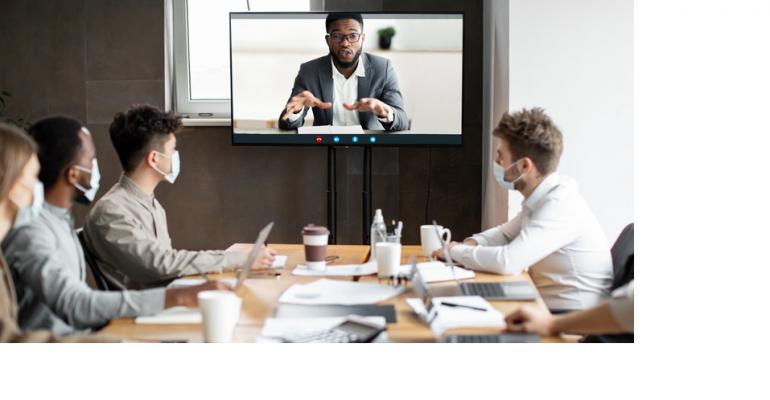Released in early April, a 51-page report titled “Future of Association Convening: Envisioning for the Sciences” saw the American Institute of Physics draw upon the collective wisdom of 10 experts in scientific meetings and education. The goals: First, to highlight trends related to the presentation and discussion of scientific research during the Covid-19 pandemic, representing more than a year when in-person meetings did not take place. Second, to present takeaways that other member organizations could use, where interaction between scientific colleagues has been permanently altered by the virtual medium.
As the authors say in the report: “The COVID-19 pandemic has forced the scientific community to break out of our molds and provided us opportunities in the virtual-conference arena to solve problems in fresh ways. Yet with the immediate need to go virtual with our conferences, there was little time to think creatively. Now that the scientific community has gained experience with new ways of convening, we can build on this great potential for our future, forging new ways to share science and build community in ways that are accessible, equitable, and grounded in excellence.”
For professionals who deliver life-sciences education, several ideas within the report apply directly to their role in developing conference elements that not only increase educational value for attendees but also deepen their affinity for the host organization. Here are four of those ideas.
• Asynchronous content delivery improves real-time engagement. “Oral and poster presentations might be recorded and shown via digital prior to the live conference, allowing the focus of the conference to shift toward questions, discussions, and networking,” the report says. “Attendees can watch lectures and decide which live question-and-answer sessions they will attend [in person or virtually]. After an event, societies could make recorded presentations available with the follow-up questions and answers linked to the video, along with additional avenues for sharing ideas. It might help to think of the end goal of conferences as becoming an omni channel of maximum flexibility, with content and engagement on demand.”
“By scheduling content prior to the physical conference, societies can also identify posters and presentations that are popular. That data can help inform the live-conference schedule by showing which topics are likely to draw the most interest.”
• Live Q&A and discussion sessions can be strengthened by bringing in additional topic experts via technology. With dialogue between attendees and experts during virtual events increasingly taking the form of post-presentation segments, connecting remotely with others who were involved in the research will provide the widest range of expertise and perspective to the live conversations. “While there may be one designated presenter, virtual components could enable interaction with more collaborators or members of the team,” says the report. “Some societies have already begun to introduce this feature in some form.”
• For some attendees, virtual networking tools reduce hesitation to interact with industry veterans and topic experts. One-on-one video-networking, group-chat forums, and other technology features can help those who might feel too intimidated to approach veteran scientists and HCPs at in-person events—students, young professionals, and introverts, to name a few—to interact with senior colleagues. As a result, the report suggests that meeting hosts offer more virtual-networking opportunities that use artificial intelligence guided by keywords and common interests to connect attendees before, during, and after a conference.
• Field trips out of the convention venue must be reimagined to include the virtual audience. They're central features for many medical events, and these group visits to patient clinics, research labs, universities, and museums are generally ranked high by participants for their educational and collaborative value. As a result, meeting hosts “must wrestle with how to capture the value of these events for virtual attendees and for others with accessibility needs.”
To read about other sections of the AIP’s report that apply to conference organizers in any scientific field, check out this MeetingsNet article.





